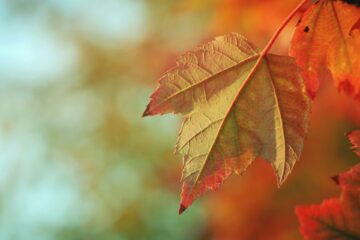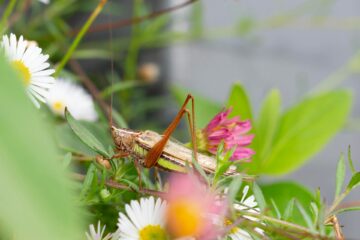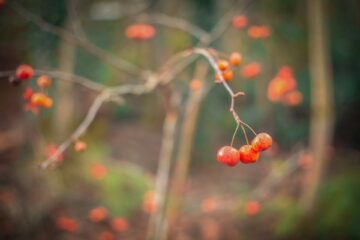It’s that time of year: You’re starting to plan your garden, and you may find yourself wondering if it’s too late. I’m here to tell you that no, it’s not too late! There are still plenty of ways to make the most out of your summer harvest and get everything ready for an even better autumn. Here are some essential tips for late-summer gardening delights:
Get plants off to a good start.
- Planting in the spring is better than planting at the end of summer.Don’t plant too early or too late, or your plants won’t have enough time or nutrients to grow properly before winter hits.
- Don’t plant too early or too late, or your plants won’t have enough time or nutrients to grow properly before winter hits.
Don’t plant too early or too late, or your plants won’t have enough time or nutrients to grow properly before winter hits.Don’t plant too early or too late, or your plants won’t have enough time or nutrients to grow properly before winter hits.
Consider timing your crops for autumn harvest.
Late summer is a great time to start planning for autumn. The weather is still warm, but you can start thinking about what crops you want to plant and when they’ll be ready for harvest.
Here are some tips:
- Consider timing your crops for autumn harvest. Some of the best autumn harvests include beans (harvested while they’re still young), cabbage (harvested before it gets too big), carrots (which will store well in the ground until winter), lettuce and spinach (which can be harvested over several weeks). If you’re lucky enough to have a greenhouse or indoor space where you can grow these plants indoors year-round, then go ahead! But if not–or if you just want something more relaxing than gardening all winter long–it may be worth considering growing some of these items as annuals instead of perennials so that they die back each year once their job is done.
Be flexible with your garden plans.
As you’re planning your garden, remember that it’s better to be flexible with your plans than rigid when it comes to lates summer gardening. You might not be able to stick to the exact schedule you had in mind if you want something specific from your harvest or if conditions don’t cooperate.
- For example, broccoli may need more time than expected because it needs cooler temperatures before harvesting–but if you plant it later in the season and its growth is delayed by hot summer weather, consider letting that crop go by without picking it at all rather than harvesting immature heads of broccoli! They will taste bitter and unpleasant if picked too early.
- Be sure that any crops that do not require frost protection have been planted in well-drained soil so they won’t rot during heavy rains or watering.
- Pay attention closely when making decisions about what kind(s) seedlings/plants should go into ground first versus last so nothing gets crowded out too soon before reaching maturity stage.
Follow the rules for companion planting.
If you’re looking to grow a vegetable garden this summer, then companion planting is something worth exploring. Companion planting is a method of planting certain plants close together to benefit each other.
If you’re new to gardening and don’t know where to start, here are some tips and tricks for beginners:
- Plant marigolds with your tomatoes. The scent of these flowers will keep insects away from your tomato plants while also providing them with extra nutrients through its roots’ nitrogen fixation process. This means that they won’t need as much fertiliser which saves money on overall costs!
Provide the right amount of water during late summer gardening.
To determine if your plants need water, it is best to check the soil around the base of each plant. If you have sandy soil, then it will be easy to see if moisture has been absorbed by digging down about 2 inches into the ground. If there is still a lot of moisture present and no signs of drying out or cracking in that area, then you do not need to add more water at this time.
If your garden has clay soil though (which tends to be much heavier), this method may not work so well because it will be harder for you to tell whether or not those roots are getting enough hydration from just looking at them on top of their beds. Instead what I recommend doing is taking out one small handful of dirt every hour or two throughout the day–and if it feels dry when squeezed between thumb and forefinger then go ahead and give those plants some more H2O!
Dig in now to prepare for autumn planting.
Late summer gardening is the perfect time to get your garden ready for autumn planting. While you may be tempted to start new plants from seed, it’s better to wait until later in the season so they can mature without being stressed by hot weather or pests.
Instead, dig in now to prepare the soil and add compost (or manure) as well as fertiliser that contains nitrogen, phosphorus and potassium (NPK). Weed out any remaining weeds on top of your bed; then cover with 3 inches of good topsoil mixed with compost or humus if possible–this will help hold moisture in during dry spells while also helping keep roots cool during hot spells. If necessary, add extra drainage material such as gravel if there isn’t enough drainage already built into your garden beds.
If you have room for vegetable transplants like tomatoes or peppers later in August/September after all danger from frost has passed then consider planting them now! Seeds take longer but once they’re established there shouldn’t be much maintenance needed aside from watering regularly until harvest time rolls around again next year!
Use these tips to get the most from late summer gardening
- Use this article to get the most out of your garden this year!
- Use these tips to plan your garden, and then use them again when it’s time to harvest.
- Learn more about gardening by reading this article, which will give you a new perspective on how you view the world around us.
The key to a successful garden is to be flexible and adaptable. You can’t control everything that happens in your garden, but you can take steps to make sure that whatever happens, it’s good for your plants. The most important thing is to stay positive and enjoy the process!


